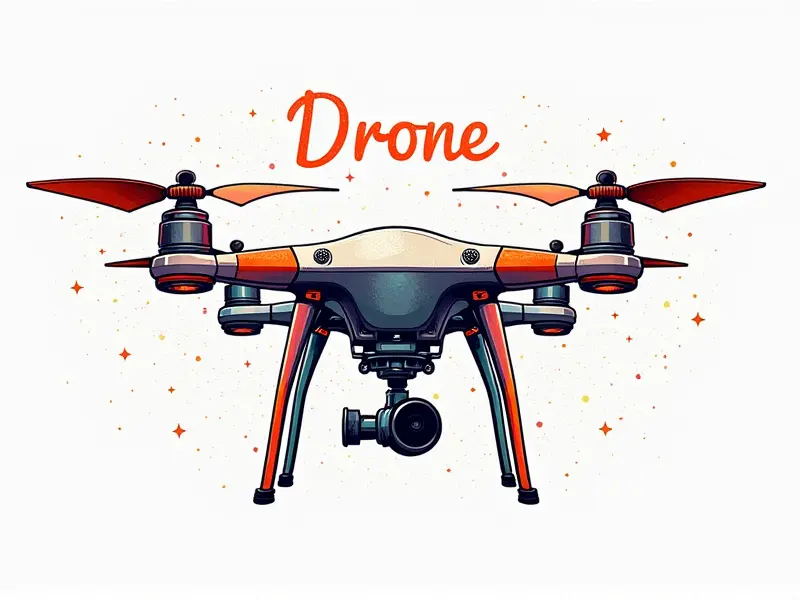Is it hard to learn flying?

Beginner's Guide to FPV Drone Racing
Flying a drone in the first person view (FPV) is an exhilarating experience that combines speed, precision, and technical skill. FPV racing involves wearing a headset connected to the camera on your drone, giving you a pilot’s-eye view of the action.
Getting Started with FPV Drone Racing
- Selecting Your First FPV Drone: Choose a beginner-friendly model like the FatShark Freeway or TBS Unify to start your journey into FPV racing.
- Understanding Basic Controls: Learn how to control pitch, roll, yaw, and throttle before you hit the track.
- Safety First: Always wear a helmet with a screen protector and follow safety guidelines to prevent accidents.
Easy Steps to Learn RC Flying
Learning to fly radio-controlled (RC) aircraft can be both challenging and rewarding. The key is to break down the process into manageable steps and practice regularly. Here’s how you can get started:
Finding Your First RC Model
- Pick a Trainer Plane: Opt for an ARF (Almost Ready to Fly) plane like the ParkZone P-51 Mustang or E-flite Ugly Stick.
- Practice with Simulators: Use software simulators such as RealFlight or RC Flight School to get accustomed to controls before flying outdoors.
Quick Guide to Flying RC Airplanes
Flying an RC airplane requires patience and practice. Start with simple maneuvers and gradually build up your skills over time.
Basic Maneuvers for Beginners
- Taking Off: Ensure you have enough runway space, then gently increase throttle until the plane lifts off smoothly.
- Climbing and Descending: Adjust your pitch to ascend or descend without losing control of the aircraft.
Mastering RC Helicopter Flying Simplified
Flying an RC helicopter is one of the most challenging aspects of radio-controlled aviation, but it can also be incredibly rewarding. With patience and practice, anyone can master this skill.
Tips for New Helicopter Pilots
- Start with a Micro Helicopter: Begin your journey with small models like the Blade Inductrix or E-flite Nano Hummingbird to get used to basic controls.
- Practice Hovering: Master hovering before attempting more complex maneuvers. This is crucial for stability and control.
Beginner's Guide to RC Quadcopter Flight
An RC quadcopter, also known as a multirotor or drone, offers an exciting entry point into the world of radio-controlled flying. These vehicles are easier to fly compared to traditional planes and helicopters.
Choosing Your First Quadcopter
- Select a Beginner-Friendly Model: Opt for models such as the Holy Stone HS101 or Tello EDU, which come with built-in safety features and easy-to-use interfaces.
- Learn Basic Flight Controls: Understand how to control pitch, roll, yaw, and throttle before attempting more advanced maneuvers.
Is FPV Drone Flying Really That Difficult?
Flying an FPV drone can seem daunting at first glance due to the complexity of the equipment and the skill required. However, with proper training and practice, it becomes a thrilling hobby that anyone can enjoy.
Steps to Overcome Challenges
- Start Small: Begin with simple drones and gradually move up to more advanced models as your skills improve.
- Join Local Clubs or Communities: Engage with experienced pilots who can offer guidance, tips, and encouragement.
Tips for Learning to Fly RC Helicopters
Mastery of RC helicopters demands a thorough understanding of their mechanics and the ability to execute precise maneuvers. Here are some essential tips:
Essential Tips for New Pilots
- Understand Tail Rotor Control: Learn how the tail rotor affects yaw control and stability.
- Practice in Calm Conditions: Start flying on days with minimal wind to improve your precision and confidence.
How Hard Is It to Fly an RC Plane?
Flying an RC plane is challenging but achievable. The difficulty level depends on the type of aircraft, weather conditions, and your personal aptitude for piloting.
Making Your First Flight a Success
- Choose a Suitable Airfield: Find a large open space with no obstacles to ensure a safe takeoff and landing.
- Plan Your Route: Map out your flight path in advance, considering wind direction and speed for optimal performance.
Smooth Transition to RC Airplane Flying
Moving from simpler models like quadcopters or helicopters to RC airplanes requires a shift in mindset and technique. Here’s how you can make the transition smoother:
Tips for Smooth Transitions
- Review Basic Aerodynamics: Understand lift, drag, thrust, and weight before attempting more complex maneuvers.
- Practice Takeoffs and Landings: Focus on mastering these critical phases of flight to ensure a safe transition.
Quick Start: Flying RC Quadcopters
Flying an RC quadcopter is relatively straightforward compared to other types of aircraft. Here’s how you can get started quickly and safely:
Steps for Quick Success
- Select a Beginner Model: Opt for models designed specifically for novices like the Holy Stone HS101 or Tello EDU.
- Leverage Training Modes: Use built-in training modes to practice basic flight controls without risking damage.
Mastering RC Flight in No Time
Mastery of radio-controlled aviation is achievable with dedication, patience, and the right approach. Follow these tips to accelerate your learning curve:
Accelerating Your Learning Curve
- Practice Regularly: Consistent practice is key to developing muscle memory and improving control.
- Seek Professional Guidance: Consider enrolling in a course or working with an experienced instructor for personalized feedback.
Conclusion
Flying radio-controlled aircraft, whether it's FPV drones, RC planes, helicopters, or quadcopters, can be challenging but incredibly rewarding. Each type of aircraft offers unique challenges and opportunities for growth in piloting skills. By starting with beginner-friendly models, joining local communities, and practicing regularly, anyone can master the art of radio-controlled flight.

